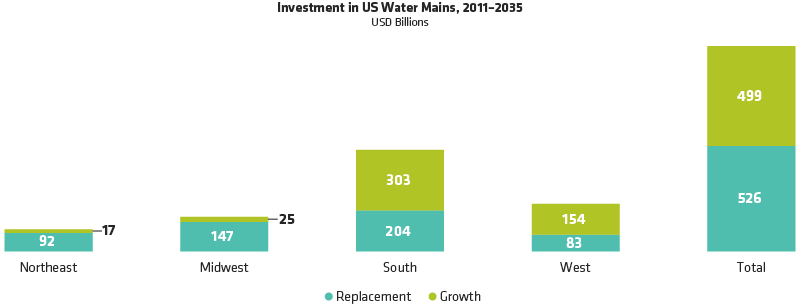After an eight-year US economic recovery, many investors are asking whether growth will continue. Beyond the immediate challenges, we think the long-term outlook will be shaped by how environmental and social sustainability are addressed.
Recent market volatility has raised concerns that the good times may be ending for the US economy and stocks. Inflationary pressures, fiscal imbalances and tighter monetary policy are all imminent threats. But today, an economy’s long-term fate isn’t determined by macroeconomic factors alone.
Sustainability Is Not a Luxury
Environmental stewardship and social equity are increasingly viewed as important for a country’s long-term economic health. For example, China’s new five-year plan formalized a shift away from the level of economic growth to the quality of economic growth. What does that mean? China is now squarely focused on preventing major financial risks, alleviating poverty and reducing pollution. For China—and many other countries—sustainability is no longer a luxury; it’s a prerequisite for continued long-term growth.
In the US, sustainability challenges include poverty, income inequality, pollution, healthcare and infrastructure. If left to fester, these problems reduce the US standard of living—and its competitiveness on the world stage.
Can the US rise to these sustainability challenges? We think the answer is yes, no matter what direction official policies take. That’s because demand for many sustainable products and services is being driven by compelling economics, as well as broad support from local and state governments and consumers. As a result, the private sector will lead the way, in our view.
Why the Private Sector?
This seems counterintuitive. Environmental and social issues are often perceived as public sector affairs. Yet the UN Sustainable Development Goals highlight why the private sector is vital. These 17 ambitious goals, to be completed by 2030, center around the broad themes of climate, healthcare, and economic and social empowerment and require $90 trillion in aggregate spending globally. It’s a massive opportunity for investors, especially if government support wanes, leaving even more room for private sector leadership.
Climate
While the US government has pulled out of the Paris accord on climate change, the US private sector has good reasons to stay engaged. Dramatic declines in the cost of wind (–45% from 2008 to 2016) and solar (–74%) power are driving massive investment in renewable technologies. Recently imposed tariffs on imported solar panels are unlikely to blunt the momentum, in our view. While wind and solar currently account for just 6.5% of US energy production, they’ve represented more than half of all new capacity since 2014 and two-thirds in 2016 (Display). US solar module maker First Solar is starting to win projects for battery storage systems, a game-changing development for the industry.


